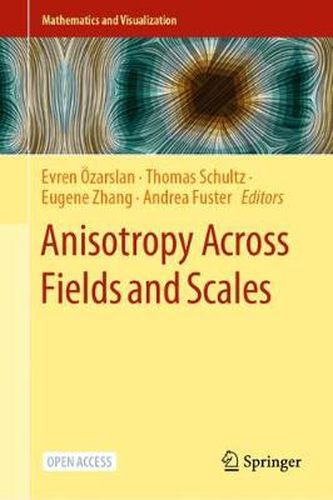Readings Newsletter
Become a Readings Member to make your shopping experience even easier.
Sign in or sign up for free!
You’re not far away from qualifying for FREE standard shipping within Australia
You’ve qualified for FREE standard shipping within Australia
The cart is loading…






This title is printed to order. This book may have been self-published. If so, we cannot guarantee the quality of the content. In the main most books will have gone through the editing process however some may not. We therefore suggest that you be aware of this before ordering this book. If in doubt check either the author or publisher’s details as we are unable to accept any returns unless they are faulty. Please contact us if you have any questions.
This open access book focuses on processing, modeling, and visualization of anisotropy information, which are often addressed by employing sophisticated mathematical constructs such as tensors and other higher-order descriptors. It also discusses adaptations of such constructs to problems encountered in seemingly dissimilar areas of medical imaging, physical sciences, and engineering. Featuring original research contributions as well as insightful reviews for scientists interested in handling anisotropy information, it covers topics such as pertinent geometric and algebraic properties of tensors and tensor fields, challenges faced in processing and visualizing different types of data, statistical techniques for data processing, and specific applications like mapping white-matter fiber tracts in the brain.
The book helps readers grasp the current challenges in the field and provides information on the techniques devised to address them. Further, it facilitates the transfer of knowledge between different disciplines in order to advance the research frontiers in these areas.
This multidisciplinary book presents, in part, the outcomes of the seventh in a series of Dagstuhl seminars devoted to visualization and processing of tensor fields and higher-order descriptors, which was held in Dagstuhl, Germany, on October 28-November 2, 2018.
$9.00 standard shipping within Australia
FREE standard shipping within Australia for orders over $100.00
Express & International shipping calculated at checkout
Stock availability can be subject to change without notice. We recommend calling the shop or contacting our online team to check availability of low stock items. Please see our Shopping Online page for more details.
This title is printed to order. This book may have been self-published. If so, we cannot guarantee the quality of the content. In the main most books will have gone through the editing process however some may not. We therefore suggest that you be aware of this before ordering this book. If in doubt check either the author or publisher’s details as we are unable to accept any returns unless they are faulty. Please contact us if you have any questions.
This open access book focuses on processing, modeling, and visualization of anisotropy information, which are often addressed by employing sophisticated mathematical constructs such as tensors and other higher-order descriptors. It also discusses adaptations of such constructs to problems encountered in seemingly dissimilar areas of medical imaging, physical sciences, and engineering. Featuring original research contributions as well as insightful reviews for scientists interested in handling anisotropy information, it covers topics such as pertinent geometric and algebraic properties of tensors and tensor fields, challenges faced in processing and visualizing different types of data, statistical techniques for data processing, and specific applications like mapping white-matter fiber tracts in the brain.
The book helps readers grasp the current challenges in the field and provides information on the techniques devised to address them. Further, it facilitates the transfer of knowledge between different disciplines in order to advance the research frontiers in these areas.
This multidisciplinary book presents, in part, the outcomes of the seventh in a series of Dagstuhl seminars devoted to visualization and processing of tensor fields and higher-order descriptors, which was held in Dagstuhl, Germany, on October 28-November 2, 2018.